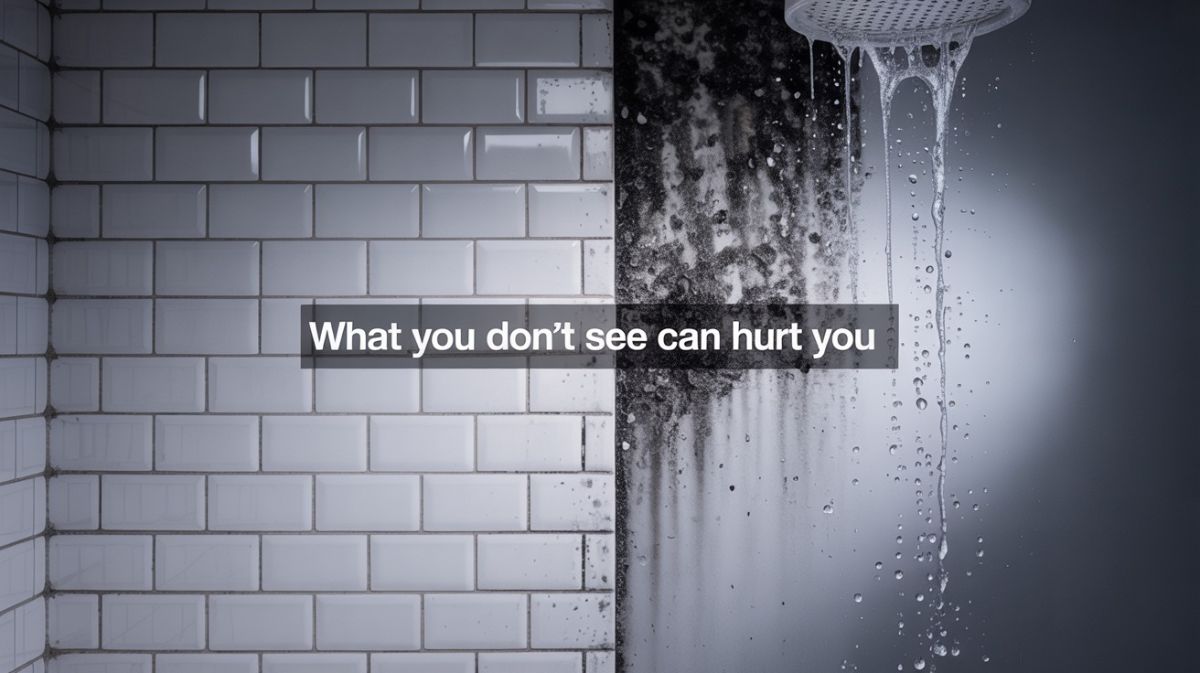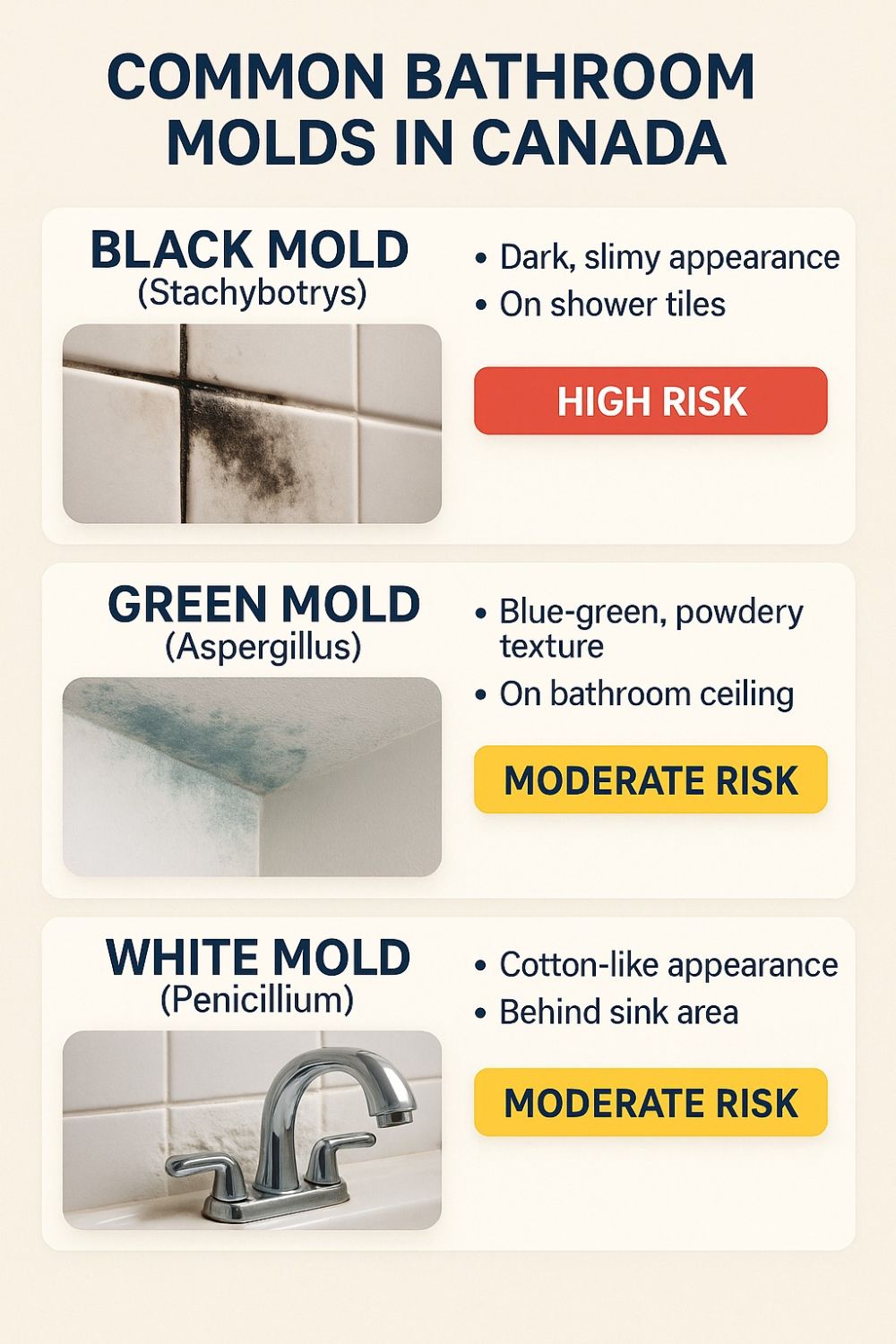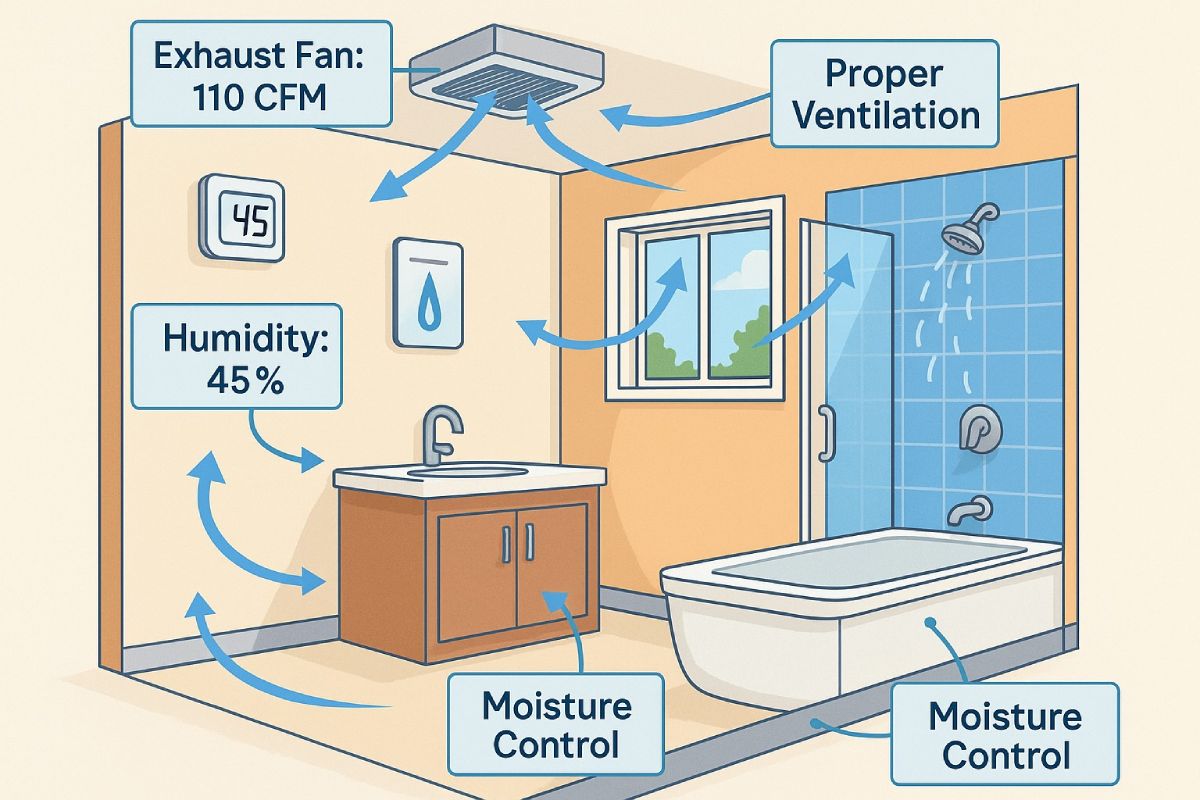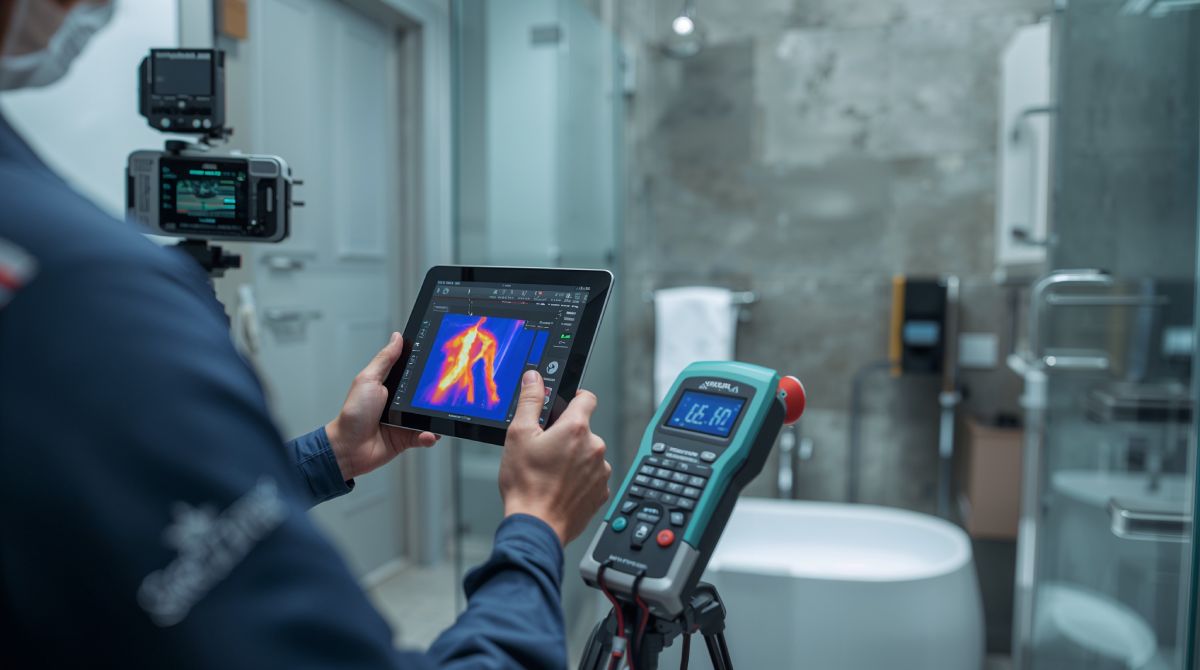Bathroom Mold Removal: Stop Recurring Growth Permanently
Professional solutions to eliminate recurring mold problems and protect your family’s health
Get Free Assessment TodayWhy Surface Cleaning Never Works
Bathroom mold affects over 70% of Canadian homes, creating health risks and property damage that costs homeowners thousands in repairs. Most homeowners only treat visible symptoms, not root causes.

Hidden mold growth behind bathroom tiles
Health Risks You Can’t Ignore
Immediate Health Effects
Bathroom mold exposure creates serious health problems within hours of contact. Children, elderly family members, and people with respiratory conditions face the highest risks.
Common Immediate Symptoms:
- Persistent coughing and sneezing
- Throat irritation and eye watering
- Worsened asthma symptoms
- Skin rashes and dermatitis
Long-term Health Consequences
Chronic mold exposure leads to serious health problems over time. Medical research shows links between bathroom mold and persistent respiratory infections, chronic fatigue, and immune system weakening.
For detailed medical information, visit our comprehensive health risks of mold exposure resource page.
Identify Your Mold Type
Different mold types require different removal approaches. Learning to identify common bathroom molds helps you choose effective treatment methods.
Black Mold (Stachybotrys)
Black mold appears as dark green or black patches with a slimy texture. It grows in areas with constant moisture like shower corners and window sills.
Recognition Signs:
- Dark green or black coloring
- Slimy, wet appearance
- Strong musty odor
- Grows in water-damaged areas
Green Mold (Aspergillus)
Aspergillus appears as blue-green or yellow-green patches on bathroom surfaces. This mold type spreads quickly and thrives in humid conditions.
Recognition Signs:
- Blue-green or yellow-green coloring
- Powdery texture
- Spreads in circular patterns
- Strong musty smell
White Mold (Penicillium)
White mold looks like cotton or powder on bathroom surfaces. It often grows behind wallpaper, under sinks, and in poorly ventilated areas.
Recognition Signs:
- White or light gray color
- Fuzzy, cotton-like texture
- Grows in damp, hidden areas
- Mild but noticeable odor
For comprehensive identification guidance, check our detailed common household molds identification guide.

Comparison chart of different bathroom mold types
Proven Removal Methods
Safety Preparation
Proper safety equipment prevents spore inhalation and protects your health during mold removal.
Required Safety Equipment:
- N95 masks or respirators
- Rubber gloves and eye protection
- Disposable clothing or coveralls
- Plastic sheeting for containment
Small Area Treatment (Under 10 Square Feet)
Mix one part bleach with ten parts water for effective mold killing. Apply using spray bottles, avoiding oversaturation that creates additional moisture problems.
Large Area Treatment (Over 10 Square Feet)
Large mold infestations require professional treatment to ensure complete removal and prevent health risks. DIY removal of extensive mold often spreads spores throughout your home.

Professional mold removal equipment and containment setup
Prevention Strategies That Work
Moisture Control
Control bathroom humidity levels below 50% to prevent mold growth. Use exhaust fans during and after showers for at least 30 minutes.
Essential Moisture Control Steps:
- Install humidity monitors
- Fix water leaks immediately
- Check fixtures monthly for damage
- Seal gaps around fixtures
Ventilation Improvements
Install powerful exhaust fans rated for your bathroom size. Calculate required capacity: bathroom square footage × 1.1 = required CFM (cubic feet per minute).
Regular Maintenance
Clean bathroom surfaces weekly with mold-preventing cleaners. Pay special attention to grout lines, shower corners, and areas around fixtures.
Monthly Maintenance Tasks:
- Deep clean grout lines and corners
- Replace shower curtains and bath mats
- Inspect and clean exhaust fans
- Check for new leaks or damage
Explore our complete mold prevention guide for detailed maintenance strategies.

Proper bathroom ventilation and moisture control setup
Mold Severity Assessment
Level 1: Minor Surface Mold (Under 3 Square Feet)
Small mold patches on shower tiles or around faucets indicate minor problems from poor ventilation or small leaks.
Action Steps:
- Clean with bleach solution
- Improve ventilation immediately
- Fix minor leaks
- Monitor for regrowth
Level 2: Moderate Growth (3-10 Square Feet)
Larger mold areas suggest ongoing moisture problems that need immediate attention. Professional consultation becomes advisable.
Action Steps:
- Identify moisture sources
- Improve ventilation significantly
- Consider professional assessment
- Document growth patterns
Level 3: Extensive Infestation (Over 10 Square Feet)
Large mold infestations indicate serious moisture problems requiring professional intervention. Often involves hidden growth behind walls.
Learn more about professional assessment in our mold inspection reports section.
When Professional Help Becomes Essential
Health-Related Warning Signs
Call professionals immediately if family members develop persistent respiratory symptoms, skin irritation, or neurological problems.
Structural Damage Indicators
Professional help becomes essential when mold appears behind walls, under flooring, or in HVAC systems. These locations require specialized equipment.
Signs Requiring Professional Intervention:
- Mold behind walls or under flooring
- Water damage from leaks or floods
- Mold in HVAC systems
- Multiple mold types present
Failed DIY Attempts
If mold returns within weeks of cleaning, underlying moisture problems require professional diagnosis. Recurring mold indicates complex issues DIY methods cannot address.

Professional mold inspection using advanced detection equipment
🏆 Mold Inspection Canada: Your Trusted Solution
Certified professional mold services throughout Ontario and Quebec. Advanced technology, guaranteed results, same-day reporting.
🍁 Ontario Services
Ottawa • Kingston • Cornwall • Belleville
Kanata • Carleton Place • Brockville
Your 3-Week Action Plan
Week 1: Assessment and Documentation
Critical First Steps:
- Document mold locations with photos
- Measure affected areas
- Test humidity levels with digital hygrometers
- Inspect for hidden moisture sources
Week 2: Immediate Treatment
Treatment Actions:
- Remove visible mold safely
- Address leaks and improve ventilation
- Replace damaged caulk and grout
- Install or upgrade exhaust fans
Week 3: Long-term Prevention
Prevention Setup:
- Establish regular cleaning schedules
- Install humidity monitors
- Seal gaps and improve insulation
- Schedule professional inspection if needed
Frequently Asked Questions
Additional Resources
Expand your mold knowledge with these comprehensive guides:
Essential Reading:
🚀 Take Action Today
Don’t let bathroom mold compromise your family’s health. Get expert help from certified professionals with 15+ years of experience.
Serving Ontario and Quebec • Same-Day Reporting • Price Match Guarantee • 24/7 Support
